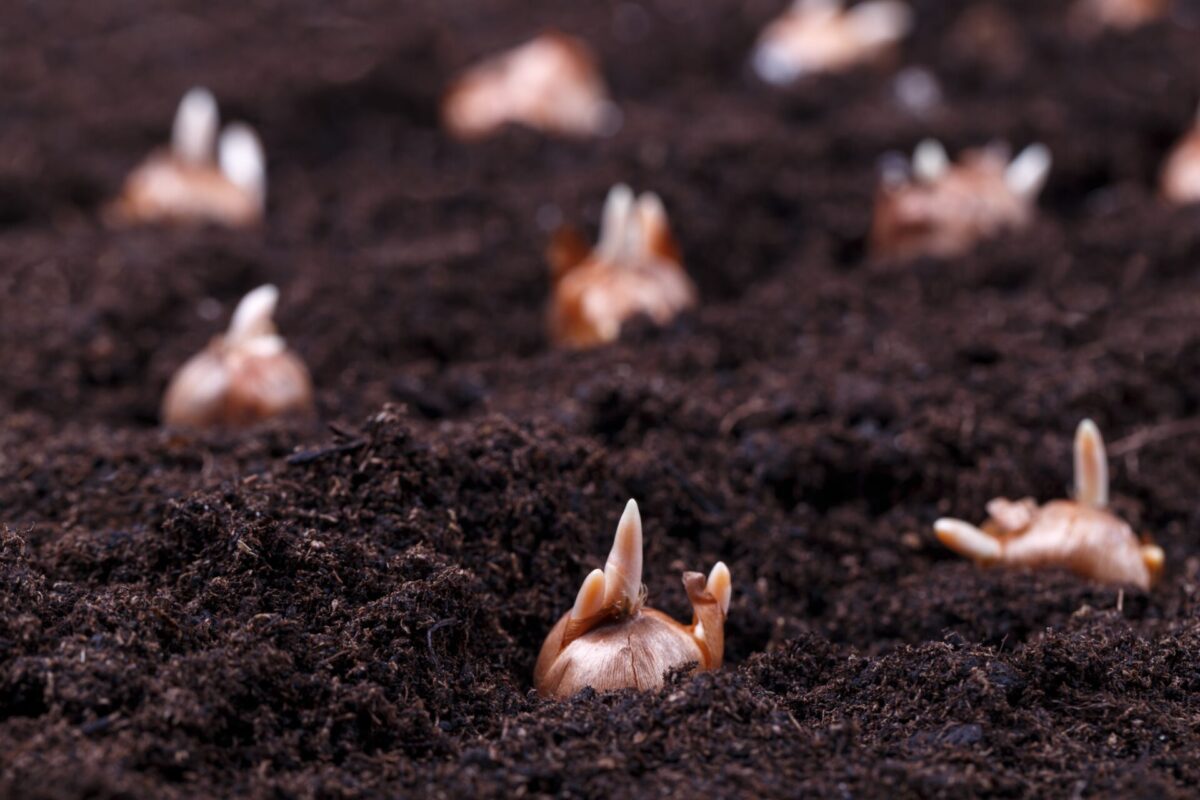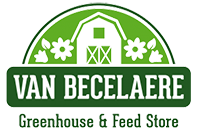Planting Bulbs 101: Types and Storing for Maximum Results

Posted on April 27, 2023 by Van Becelaere Greenhouse
Bulbs are a great way to add color and life to your garden. They come in various shapes, sizes, and colors, making them ideal for any garden space. But what exactly are bulbs, and how do they work? In today’s blog, we will explore the basics of planting bulbs 101, including a brief discussion on planting tips, a few common types of bulbs, and bulb storage. With this knowledge, you can create the perfect bulb garden!
Planting Bulbs
As long as the ground is workable, you should be able to plant bulbs, even late in the season, around the end of January. Generally speaking, bulbs need 10 to 13 weeks of 40° Fahrenheit (F) weather to encourage flowering. When temperatures warm above 40°F, those bulbs will begin to sprout foliage by springtime, followed by flowering blooms.
You will find that planting bulbs around January 1st is plenty of time for blooms to form. If you have lots of space on your property or are trying to avoid digging up any existing plants, you can start planting bulbs to begin shaping an extraordinary flower garden for the Spring.
Types of Bulbs
Many different types of plant and flowering bulbs get planted at nearly any time of the year as long as the soil is workable and the bulbs have a period of rest. The type of bulb to plant is the key to cultivating a successful flower garden.
Because the four-state region spreads across the Ozark Mountains, there are at least two grow zones common to this region—zones 6b and 7a. Your bulbs will produce as long as the bulbs you are planting have a period of what is better known as a “chilling cycle” (or period of rest) before the first Fall and first Spring frost.
Here are some of the most successful bulbs to plant in the four states for a beautiful garden year-round.
- Snowdrop flowers
- Winter Aconites
- Crocuses
- Scillas
- Chionodoxas, also known as Glory of the Snow
- American Daffodils
- Hyacinths
- Trumpet Lilies
- Tulips
While most of those mentioned above are flowering bulb types, here are a few decorative plant bulb varieties.
- Cannas
- Caladium, sometimes called angel wings or elephant ears
Then you have edible bulbs, like your common garlic, onion, and shallots, which all thrive well in zones 6b and 7a.
Bulb Storage
Bulbs are a great way to add color and beauty to your garden. While planting your bulbs is relatively easy, proper storage is essential for the health and longevity of a bulb, but it can also be tricky. Knowing the appropriate technique for storing bulbs can help you get the most out of your investment.
If you didn’t plant your bulbs in the Fall, your next best option is to plant them in the ground immediately after the soil thaws out. Mulch the topsoil to keep the soil moist and prevent winter heaves from forming next season. If you plant too late, it can take one to two years to see any results, so remain patient.
You can also complete what is referred to as a “force bloom” indoors. Bulbs should sprout new growth within 7-14 days; after the 13-week chill cycle to bring forth flowers. To begin that chill cycle, keep the soil moist and store the potted bulb in a cold space, such as a refrigerator set to 40°F. At the end of the 13 weeks, move the pot to a warmer location that hovers between 65 and 75°F.
Talk With Your Local Garden Center About Growing Bulbs
If you still want to plant bulbs this year, talk with the friendly staff at the Van Becelaere Greenhouse in Pittsburg, Kansas. They can provide expertise on what bulbs grow successfully throughout the four-state region. In addition, they can guide you on when a good time is to plant each type to get the best results year after year. Contact Van Becelaere Greenhouse today by calling (620) 231-1127.
